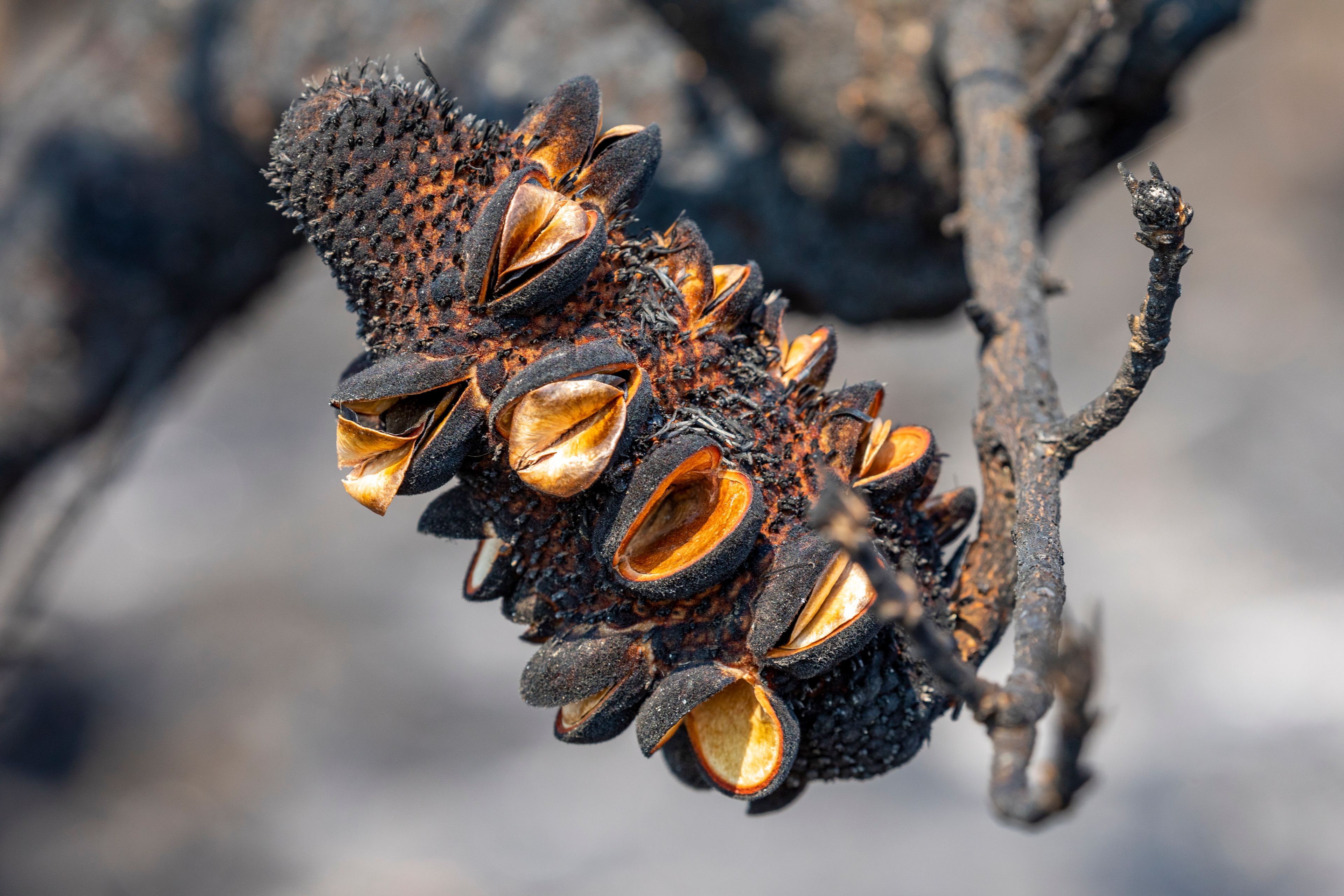Home/Curriculum resources/Mathematics of bushfire/Activity 3 - Fire behaviour (Part two)
Learning Area:
Mathematics
Year level:
Level 9
Suggested timing:
40 minute discussion on concepts, theory and examples. One 40-minute session to work on problem set in handout. 15 minutes class discussion on the two inquiry questions listed below after watching the video.
Required resources:
Handout, Laptop/tablet, Projector

Activity 3 - Fire behaviour (Part two)
This activity is a part of the Mathematics of bushfire resource.
Burnt Banksia Plant. Blue Mountains, Dharug country. Photographer: Andrew Merry. Source: Getty Images. Used under licence.
In this two-part activity, students will explore concepts like flame angle, flame height, and fire intensity, delving into the factors influencing them, such as fuel load. They will work on problem-solving exercises involving algebraic and trigonometric concepts while discussing the significance of fire intensity in distinguishing 'good fire' from 'bad fire.' Additionally, a video will stimulate discussions centered on Indigenous fire management practices and decision-making, fostering a deeper understanding of their approach to fire.
Required resources
laptop/tablet and projector
Suggested supporting resources
Step by step guide
Step 1: Introduction
Students are introduced to the concepts of flame angle, flame height and fire intensity and the additional factors that determine them (e.g. fuel load).
Equations for flame angle, flame height and fire intensity are introduced and discussed.
Step 2: Students undertake mathematical problems
Students answer worksheet questions that require solving problems about rate of spread, fire intensity, flame angle, flame height. These problems require combining algebraic and trigonometric concepts.
Step 3: Discussion
Discussion/video about fire intensity and how it defines ‘good fire’ and ‘bad fire’. For example: Fighting carbon with fire
Inquiry-based questions to support discussion:
Why would Indigenous people want to avoid ‘bad fire’?
Reflecting back over the last two activities, why would Indigenous people choose to ignite a fire by dropping a firestick from the top of a mountain (as opposed to the bottom)?
Related activities within this resources:

Activity 1 - The geometry of fire
In this activity, students study ellipses, apply the properties to understand wind-driven fires, and estimate fire areas using scientific notation for a comprehensive grasp of fire behaviour.
Suggested timing:
30-minute discussion on concepts, theory and example problems. Two 30-minute sessions to work on assigned problems in handout.
Required resources:
Handout

Activity 2 - Fire behaviour (Part one)
In this two-part activity, students will delve into the concept of head fire rate of spread and explore the factors affecting it, such as wind, temperature, humidity, and topographic slope.
Suggested timing:
40 minute discussion on concepts and theory. One 40 minute session to work on problem set 1 and one 40 minute session to work on problem set 2 in handout.
Required resources:
Handout

Activity 4 - Fire and climate
In this activity, students delve into fire danger ratings, examine the forest fire danger index, analyse historical fire weather changes, interpret data, and make informed decisions, deepening their comprehension of the fire-climate connection.
Suggested timing:
40 minute discussion on concepts, theory and examples. One 30 minute session to work on problem set 1, and one 40 minute session to work on problem set 2 in handout. Problem set 2 can involve broader class discussion and students working in groups.
Required resources:
Handout, Laptop/tablet and internet connection